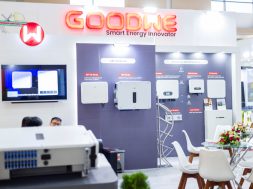
Lithium ion batteries may soon be able to charge much faster thanks to what seems like a simple substitution of one mineral for another in the battery’s cathode.
Researchers from the Rensselaer Polytechnic Institute this month announced they had achieved much faster charging rates in lithium ion batteries by replacing the usual cobalt oxide used together with lithium in the cathode with vanadium disulfide.
“It gives you higher energy density, because it’s light. And it gives you faster charging capability, because it’s highly conductive. From those points of view, we were attracted to this material,” said Nikhil Koratkar, the lead author of the study.
The researcher added that improving the electrodes was the way to making lithium ion batteries perform even better.
It seems lithium ion batteries’ dominance will be hard to break with so much work being put into improving these batteries. Koratkar’s team’s work is only the latest example of this work, but there are scores of labs around the world looking for the same ultimate reward: maximizing the performance of the world’s dominant battery technology before a viable alternative really makes it out of another lab.
Recently, the race to reduce charging times for EV batteries specifically heated up as new superchargers came on the scene with few batteries capable of actually using them without getting fried in the process.
Tesla last month opened its first V3 Supercharger station that has a capacity of 250 kW and can add 30 km of range per minute. The company has made its new cars compatible with the new, faster chargers, but Tesla is more of an exception in that it makes its own batteries and chargers.
An Australian company, Tritium, makes chargers that can add more than 215 miles to an EV’s range in just ten minutes. This is a whole new category of ultrachargers that could have a capacity of as much as 350 kW, adding range at a rate of 20 miles per minute, Bloomberg’s David Stringer said in a recent overview of the industry. This compares with 20 miles per hour for regular chargers dominating the EV landscape at the moment.
No wonder then, that boosting a battery’s capability to charge at much faster rates has become a priority in the segment. It is also helping lithium ion batteries maintain their lead over alternatives, exciting as some of these happen to be.
A report by David R. Baker for Bloomberg earlier this month quoted an industry insider who summed the situation very accurately: “We don’t believe, given all the investment in lithium ion, that people are going to throw that out the window and start over from scratch,” Erik Terjesen, a senior executive at Ionic Materials, told Baker.
In this context, what the Rensselaer Polytechnic researchers are working on is an excellent example of the winning approach to battery improvement: performance enhancement and component improvement rather than search for better alternatives.
Millions of electric cars are expected to hit the roads in the coming years. From a certain perspective, the race to faster charging is the race that will make or break the long-term mainstream future of the EV.











